The craft of being a Programmer
An interview with the masterminds behind the scenes
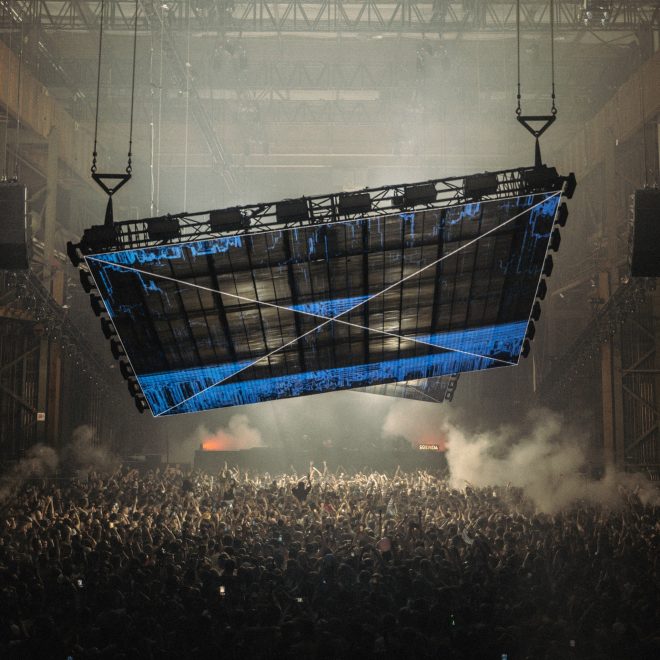
The art of programming for music events is far more than just booking artists and organizing lineups. It’s about creating an atmosphere, telling a story, and connecting with the energy of the venue, the audience, and the city. In this conversation, we’ve had the privilege of speaking with some incredible people who are at the forefront of this craft. Lucas de Beaumont, the mind behind Complex Club and Clomplex Festival in Maastricht, Maarten Pordon, freelance programmer and entrepreneur (Club Closure, De Marktkantine Het Sieraad) in Amsterdam, Bas Amro from Onder De Radar Festival, Enschede, Tom van Ulsen of Paradigm in Groningen, and Dennis Rochat of Elevation Events, who organizes the Soenda Festival, each shared their journeys and insights into what makes a successful programmer.
They all agree that to be great at this job, you need more than just a good ear for music.
"A great programmer isn’t just someone with a good ear for music; a programmer is a storyteller, a bridge-builder, someone who can see the invisible threads that connect artists, agencies, and audiences,” Lucas said.
Maarten added that aspiring programmers should dive into every aspect of the industry so they can truly understand the complexities of what makes an event tick. Being a programmer requires a broad set of skills and a deep passion for creating something memorable.
This holistic approach is essential in developing an understanding of what makes an event truly resonate. He shared,
"If you want to become a good programmer, you need to do everything when it comes to music: promoting, marketing, DJ-ing, etc., to expand your knowledge. And with an eye on the future for myself, I’m slowly diving into new tools such as AR, CGI, and AI."
The way each city influences the vibe of an event is another critical aspect of programming. Maarten explained how Amsterdam’s scene is filled with energy and opportunity, but that can also come with its challenges. Tom, on the other hand, highlighted the charm of Groningen, a city that’s more isolated but has a unique energy that allows for a different kind of programming, tailored specifically to the local crowd. Each city, with its distinct pulse and rhythm, offers its own set of challenges and rewards, and knowing how to tap into that is key to creating an unforgettable experience.
Programming a festival and programming a club are two very different beasts, each requiring a unique approach. As Dennis Rochat pointed out,
“A festival—especially one with thousands of people—demands large headliners to fill the space and create that larger-than-life experience. Festivals are built months in advance, often requiring collaboration between numerous teams, and the vibe is constructed from scratch. On the other hand, club programming allows for a more intimate, personal connection with the crowd, where the focus can be on experimental acts and building a specific atmosphere that resonates with a smaller, more dedicated group. The size of the event and the space you’re working with dictate the energy you need to bring, and the approach to both is shaped by these fundamental differences."
Behind the scenes, the life of a programmer is far from glamorous, with challenges that go beyond the logistics of booking talent. The job can be incredibly taxing, both physically and mentally. As Bas Amro shared, staying creative year after year is becoming harder, especially when financial pressures and the demand for larger acts can sometimes cloud the vision. The constant juggling of multiple responsibilities, from handling last-minute changes to managing stressful negotiations, can take a toll on mental health. The pressure to constantly deliver new and exciting events while maintaining a sense of authenticity can lead to burnout and self-doubt. It’s something that Lucas and Maarten also touched on, with Maarten noting the importance of staying true to one’s vision and not getting lost in the industry’s expectations. The mental strain that comes with being responsible for so many moving parts is real, and finding balance and support in such a fast-paced industry is crucial to maintaining both creativity and well-being.
Whether it's balancing financial pressures, staying true to a creative vision, or managing the logistics of a massive event, these programmers share a common goal: to create experiences that people will remember long after the night ends. Their commitment to their craft is truly inspiring, and it shows in the vibrant, unforgettable events they bring to life. In this interview, we dive into the weeds of what it truly means to be a programmer and their impact on the whole electronic music industry.
THE CRAFT
The dance scene in the Netherlands is vibrant yet diverse, with distinct characteristics in cities like Amsterdam, Utrecht, Groningen, and Enschede.
Lucas de Beaumont comes across as an incredibly experienced and insightful figure in the world of event programming. His perspective on the role is grounded in a deep understanding of the music industry. I admire his holistic approach, emphasizing the importance of doing everything—marketing, promoting, DJing, and more—to truly grasp what makes an event resonate with the audience. It’s clear he’s not just focused on the music but also on the entire experience that surrounds it.
“My journey began when I turned 18, stepping into the heartbeat of a club for the first time. It was in Brussels, at Club Fuse, a place that didn’t just play music but curated experiences. It was a space where the DJ was secondary to the atmosphere, where the crowd gathered not just for the beat but for the collective rhythm of the night."
“The essence of Fuse wasn’t just about who was playing; it was about the unspoken connection between strangers who came together for something greater than themselves. That’s the magic of nightlife—its power to transcend individual experiences and weave them into a communal tapestry."
Lucas´s journey started with exciting passion, and little by little, that passion ignited more and more challenges.
“When I set out to bring that magic to Maastricht, I was met with skepticism. “A city of 115,000 residents?” they said. “People go to Amsterdam for this.” But I knew that every city, no matter its size, has its pulse and longing for expression and connection. So, I invented a name, Claydrum, and started small—250 people in a café basement—and built from there. It wasn’t just about filling a space with bodies; it was about filling a void with something meaningful that resonated with this city's unique spirit."
COMPLEX CLUB
Lucas’s reflections on the fifth anniversary of “Complex Club” were a testament to his deep connection with both the club and the city of Maastricht. His programming of the anniversary celebrations—spanning a diverse range of artists from Joris Voorn to Mall Grab, Dyen, Trym, Anna, and Space 92—was a deliberate and thoughtful representation of the club’s evolution and the community it served.
By selecting artists who embodied different facets of the club’s audience, Lucas was able to tap into the diversity of his crowd while still crafting a cohesive experience.
“Each night spoke to a different facet of our community. 5,200 people came through our doors, a staggering number for a city of this size. But it wasn’t just about the numbers; it was about the faces, the stories, and the unspoken bonds formed on those dance floors. People came from Amsterdam, from all over the country, to be part of something that, years ago, they said could never happen in Maastricht. We created something that resonated deeply, that echoed the aspirations and desires of our city. It was a triumph not just for Complex but for everyone who believed in what we were building.”
The sheer number of attendees was a powerful reflection of how far the club had come, but Lucas didn’t just focus on the crowd size. He valued the personal connections and experiences that formed on those dance floors, where faces and stories took center stage. It was clear that, for him, the club was more than a venue—it was a living, breathing entity that had become integral to the city's identity.
“The most profound validation doesn’t come from words; The tears in a longtime visitor’s eyes as they handed us a gift for the 15th anniversary of Claydrum, the sensitive letters from technicians who had been with us since the beginning, recounting their journey and ours. It was the older couple who danced together like they were twenty again, the young girl who told us this was the first place she felt she truly belonged."
These were the moments that defined a club’s success—not just the music but the sense of belonging, the space for self-expression, and the collective energy that transcended the night. Lucas painted a vivid picture of how a club could become a sanctuary, where people traveled from all over to feel connected and find a sense of home. His programming wasn’t just about curating great lineups—it was about creating an environment where the music could truly resonate with everyone in the room.
“When people travel from far and wide, from the bustling metropolises to our corner of the country, you realize that what you’ve built is more than a club. It’s a destination, a beacon for those who seek something more profound than just a night out”, he shared.
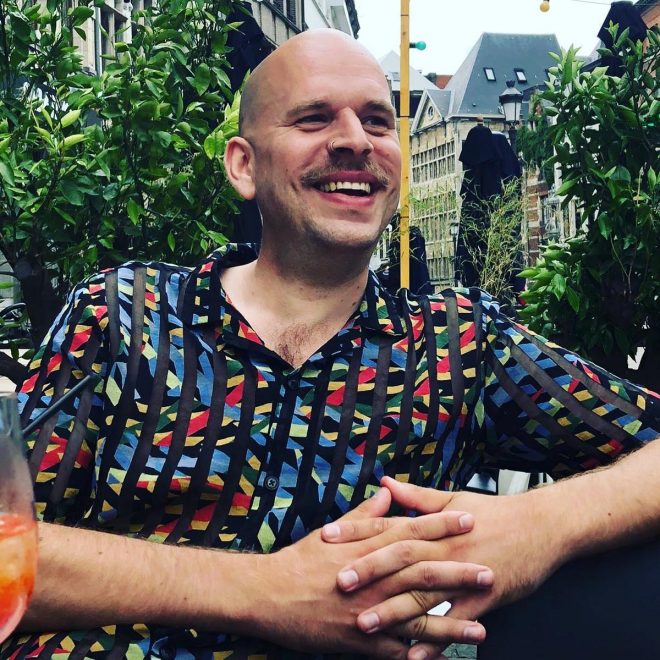
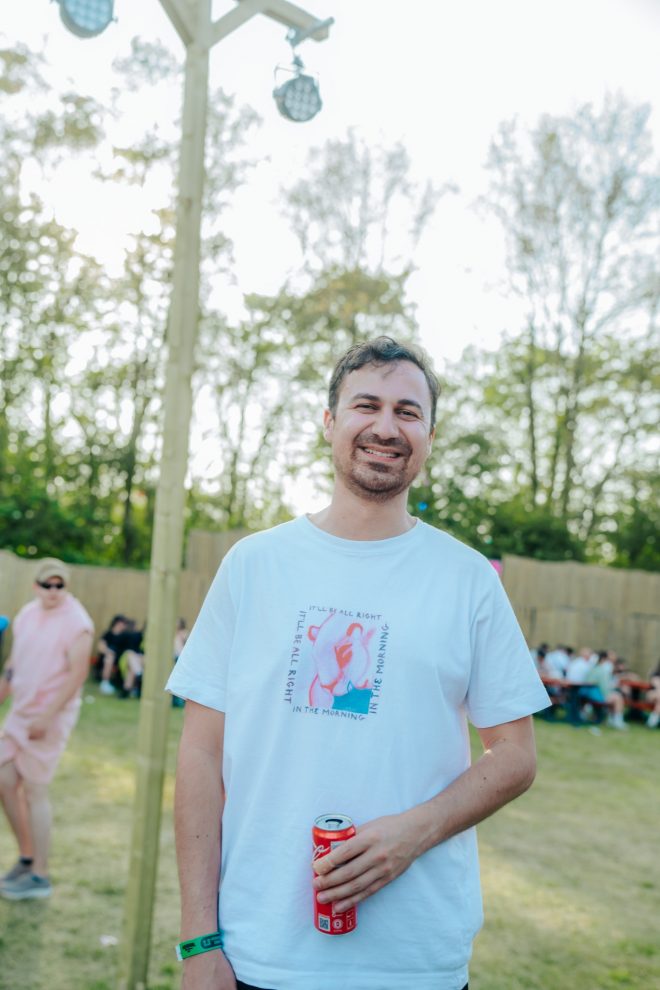
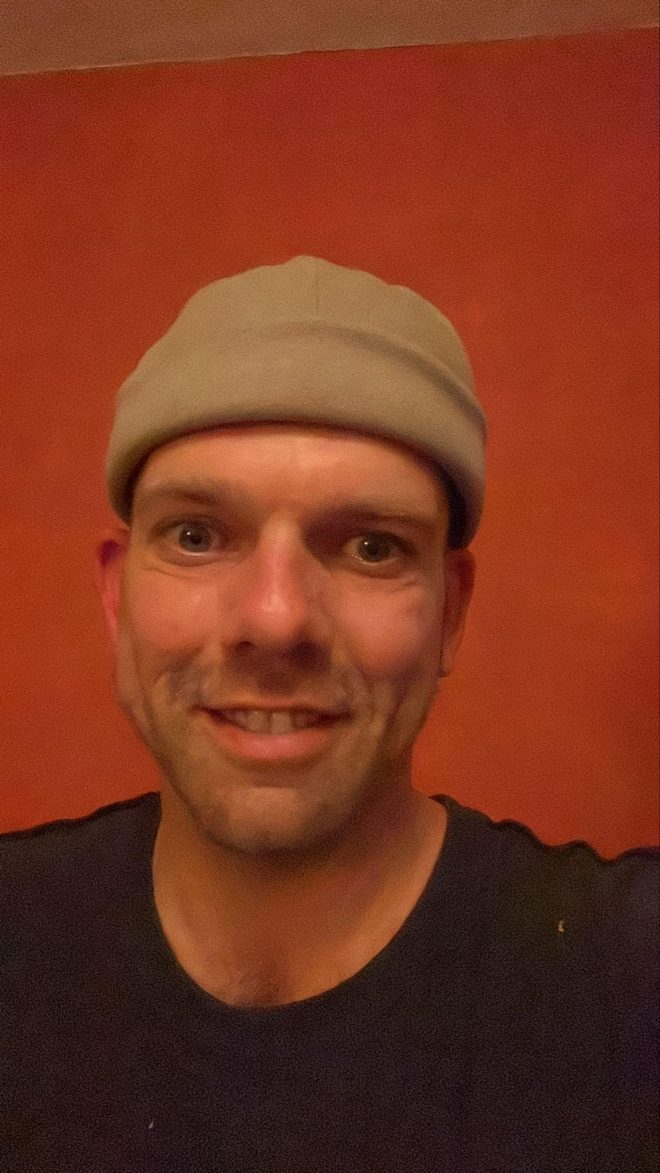
Finally, Lucas also offered valuable insight into what makes a great programmer. It wasn’t just about booking top-tier artists but about the relationships and trust that were built with both the artists and the audience. His mention of booking Paul Kalkbrenner in 2017 as a culmination of trust and persistence emphasized that a great programmer wasn’t simply someone who knew the latest trends; they were someone who understood the deeper connections that made a venue special. A programmer had to be a storyteller, weaving together music, community, and experiences to create something that transcended the night. In today’s rapidly changing dance scene, intuition was crucial—knowing when to follow trends and when to set them was a delicate balancing act that required deep understanding and foresight. Lucas advocated for staying true to one’s vision while being adaptable, especially as the scene continued to evolve.
Looking ahead, Lucas shared his thoughts on the future of the dance scene in the Netherlands, particularly in the post-COVID landscape. He acknowledged the shift in audience demographics, with the older crowd retreating and a younger generation embracing the raw energy of Hard Techno. While nostalgic for what had passed, he saw this shift as an exciting opportunity to embrace new energy and new sounds. His perspective on the evolving scene was one of openness and adaptability; he didn’t see change as something to resist but as a necessary evolution.
Lucas’s advice for aspiring programmers was rooted in discipline, patience, and authenticity. He encouraged them to find their "why" and stay true to their vision despite the inevitable challenges and setbacks.
“The road of life is long, and it is often lonely. It requires not just a passion but an unwavering sense of discipline. The most valuable thing I can tell you is this: find your why. Why do you want to do this? What do you hope to create? If you can answer that with clarity and conviction, then no obstacle will be too great."
“Success in this field isn’t always measured by sold-out shows or big-name bookings. It’s measured by the moments you create, the lives you touch, and the community you build. Be patient. Be persistent. Have discipline. Above all, be authentic. The world doesn’t need more copies; it needs originals. Take the time to learn, to fail, and to grow. Seek out mentors, not to emulate them but to understand the principles that guide them. And when you fall—and you will fall—get back up. Remember that every setback is a lesson, every closed door an opportunity to find another way. Sometimes you win, sometimes you learn. Keep that in mind!”
“This industry isn’t for the faint-hearted. It will test you, break you, and rebuild you. But if you stay true to your vision, if you remember why you started in the first place, you’ll find that the reward is worth the struggle. You’ll create something that isn’t just successful but meaningful, something that resonates long after the music fades. And in the end, that’s what we’re all here for—to make a mark, to leave something behind that says, We were here. We mattered.
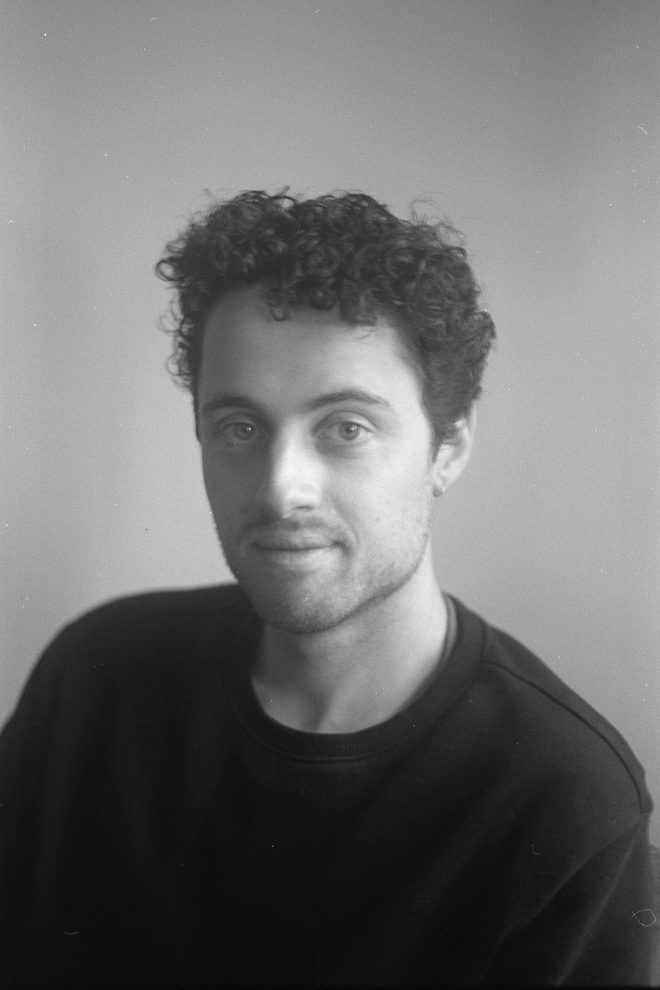
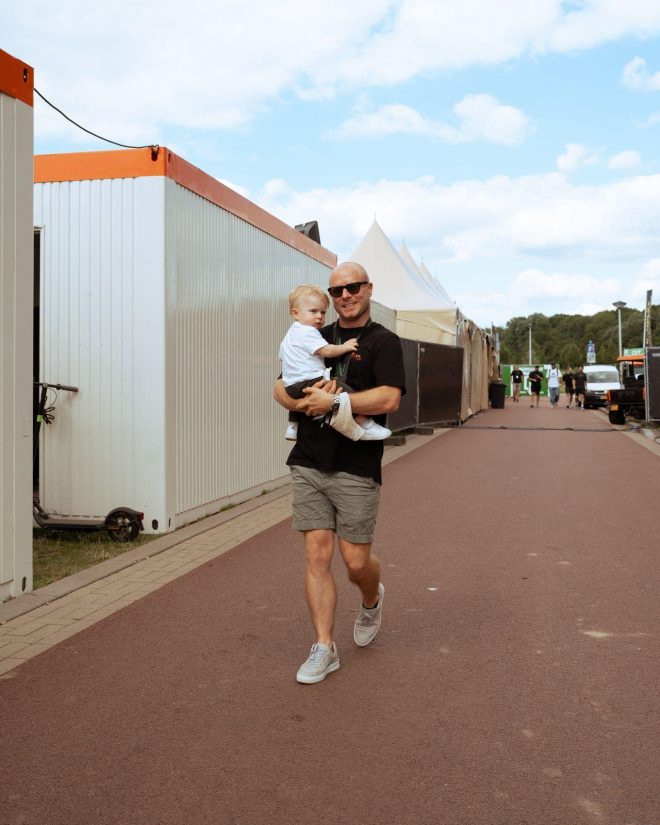
Understanding the Dance Scene Across Different Cities
Each city has its unique cultural landscape and vibe. Understanding this is key for a programmer looking to craft meaningful experiences. Maarten Pordon´s thoughts on Amsterdam’s unique vibe not only stand out but also let us know what to expect from this vibrant city. His insight into the balance between opportunity and pressure in Amsterdam highlights his thoughtful approach to programming, always keeping the bigger picture in mind. He acknowledges the city’s energy and opportunities but also points out the challenges of living in a place where so much is happening.
"The vibe between Amsterdam and other cities is perhaps that a lot of people want to live here because more things are happening here... a privilege but also a curse."
His reflections on the dance scene in the Netherlands are a fascinating mix of personal experience, hard-earned wisdom, and an intimate understanding of the dynamics that shape the country's diverse musical culture. What stands out most to me is his raw honesty about the challenges he’s faced throughout his career.
From starting as a DJ in a small town near Utrecht to the setback of losing his festival and being bankrupt, Maarten’s journey shows just how tough it can be to carve out a space in such a competitive industry.
"In 2011, I promoted my festival called Symphonica Elektronica (SETFEST), but I was too early with a certain kind of programming with my vision at that specific time. The city of Utrecht wasn’t ready back then for Trentemoller, Dixon, Seth Troxler," he admits, speaking about his 2011 festival, “and I was too early with a certain kind of programming.”
It’s a humbling reminder that timing is everything in this business, and sometimes the market just isn't prepared for what you have to offer, no matter how visionary it might be.
His move to Amsterdam, with just 100 euros in his pocket, was a moment of reinvention and resilience. The decision to dive headfirst into what the dance scene needed, rather than taking a safer, more traditional job, reveals a deep level of commitment and passion.
"I chose to look more at what the Dance Industry needs at a certain kind of time in a certain kind of city," he says, and it’s this kind of forward-thinking mentality that has led him to thrive in the city’s competitive environment.
While Amsterdam offers a wealth of opportunities, Maarten doesn’t shy away from the reality that it’s also a city full of competition, with big players like Awakenings, DGTL, and Loveland dominating the landscape. This means that promoters have to work harder to find their niche, a sentiment that resonates with me—running a business in any major city is never easy, and standing out in a crowded market is a constant challenge.
What struck me the most about Maarten’s perspective was his appreciation for local talent. The idea of starting with the opening slot, a position many DJs and promoters might overlook as less glamorous, is a concept I admire.
"In my vision, local talent is always doing the opening slot and needs to prove themselves that they can tell a story with their set," Maarten shares, and it makes so much sense.
The opening slot is often one of the hardest to fill, setting the tone for the entire night. But Maarten sees it as a crucial opportunity for emerging artists to show they have the storytelling ability that goes beyond just playing tracks. It’s about building a connection with the crowd, creating energy, and slowly guiding people into the night’s journey. Those who master this, he believes, earn their place in the lineup, and this kind of mentorship for local talent is something that’s often overlooked.
Maarten’s insights also reinforce the idea that every city has its unique vibe and understanding that is key to curating the right experience for each audience.
“To tap into it, it’s always good to go there quite often for a visit,” he advises, and this feels like such a grounded, sensible approach.
In an age where so much can be researched online, it’s easy to forget the importance of immersing yourself in the local culture and understanding the specific energy of a place.
For Maarten, visiting cities and engaging directly with the community is crucial for programming events that truly resonate. The balance between what the crowd wants and what the promoter needs is delicate, but Maarten seems to have mastered it, crafting lineups that are both inspired and pragmatic.
I also appreciate how Maarten speaks about the role of the artist in this process. It’s not just about booking the biggest names or the latest trends; it’s about finding the right talent for the right moment.
“You are always looking where somebody is already playing. Is it in a regional club? What kind of sound? Do they have a community? Can they sell tickets?”
He asks, showing how much thought goes into every decision. It’s not just about filling slots, it’s about creating a balance that will keep the audience engaged from start to finish. The ability to read the room—both literally and figuratively—seems to be an essential skill in Maarten’s approach.
Reading through Maarten’s reflections, I can’t help but feel inspired by his unwavering commitment to both the craft and the community. His insights into the Dutch dance scene, from Utrecht to Amsterdam, and his approach to programming and supporting local talent serve as a reminder that success doesn’t just come from luck or timing—it’s about hard work, perseverance, and a deep understanding of the people you’re working with. As a DJ, promoter, and entrepreneur, Maarten’s journey is a testament to the power of persistence, passion, and the willingness to adapt and innovate when the landscape around you changes.
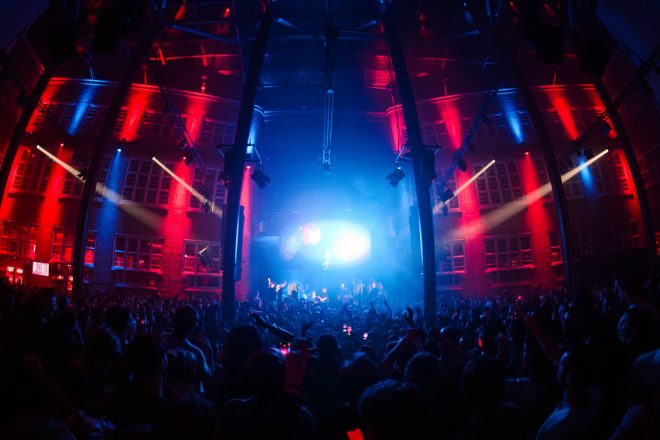
CLUBS VS FESTIVALS
When I spoke to Maarten Pordon, he shared that the differences between programming for a large festival versus a smaller club night, his insights were both pragmatic and reflective of the immense work behind these two very different environments. His perspective truly highlights how distinct the demands of each scale can be and how much it impacts the work required from a promoter and programmer.
Maarten started by emphasizing the scale and timing differences between festivals and club nights.
“A 20,000-capacity festival needs to have bigger headline artists than a smaller club of 1,000 people," he noted.
Pointing out that festivals are often larger-than-life events that draw crowds specifically for the big names.
Club nights, in contrast, are more intimate and typically less frequent, with a consistent crowd that expects a more tailored experience.
“The festival is 'a one-off moment in the year,' whereas a club night is an ongoing commitment “, he explained.
Showing how the nature of the events dictates the programming decisions.
What stands out from our conversation is how much stress a festival brings in comparison to the more regular rhythm of a club.
“At a club, I can program a club every Friday and Saturday night if you want, but with festivals, it’s from November till May that you need to do the work for programming a festival,” Maarten pointed out.
The workload behind a festival isn’t just about booking artists—it’s about creating an entire experience from scratch. In a club, as a creative director at Club Closure I’ve did everything from marketing until the setting of the lights, in De Marktkantine it was more helping management with pointing out the bigger picture and in Het Sieraad I’ve helped developing a renting venue becoming towards a full-grown professional club, with a result such as a new D&B KSL Soundsysten. But for a festival, it’s a different endeavor. Especially if you want to give it its own identity.
“You need to build everything from scratch. That includes everything from sound systems to stages, and even the atmosphere and branding." Nowadays, it’s very hard, in my opinion, to have an actual identity. There is so much to do and so much to hear and see. I believe, in general, the Netherlands has more than 300 festivals. From Hardstyle and EDM to underground House & Techno bands. It’s hard to compare this with Club Night since that is every Friday and Saturday night, and a festival is mostly one moment or a few days in a weekend."
The work for festivals begins much earlier in the year, with business deals and programming often happening during the Amsterdam Dance Event (ADE), A week packed with networking, negotiations, and setting the groundwork for the months ahead. Once the deals are made, the pressure ramps up, and the real work starts.
While some promoters prefer to focus solely on one large event, Maarten thrives in juggling multiple projects at once, which is a reflection of his versatile approach to his work. That said, the workload can be overwhelming.
“At the Amsterdam Dance Event (ADE), all the bookers, managers, and industry from all over the world are coming to the city. There, we are discussing the deals and networking in a whole week of October, so you can do business afterwards from November to May onwards. In that sense, I always feel that a festival is more stressful. It needs a lot of preparation from the whole team to do one festival for one day. Built a city from nothing in a park, in the woods, or a venue, etc. Some programmers like to focus on one project, but I like to focus on multiple projects. I always tell my girlfriend that I don’t have time during that period because of the extra workload of festivals. What I’ve learned is to find a bit of balance for yourself”, he confided.
The intensity of the job often leaves little room for downtime, and he’s learned to manage that pace by finding small moments of balance.
“Last year was the first time that I had some days off between Christmas and NYE; normally I was just working, but every agency is always closed from Christmas till the 2nd week of January”, he says.
It’s a candid admission that even for someone so deeply passionate about his work, the intensity of the festival scene can take a toll.
Maarten’s insights give a valuable look into the complexities of programming at different scales. His approach to balancing these two very different worlds—a club environment that demands regular engagement and a festival landscape that requires immense, often year-long preparation—is not only inspiring but serves as a reminder of the dedication it takes to succeed in the dance industry. It’s clear that, for Maarten, the hard work pays off, but finding moments of personal balance is key to keeping that energy sustainable over time.
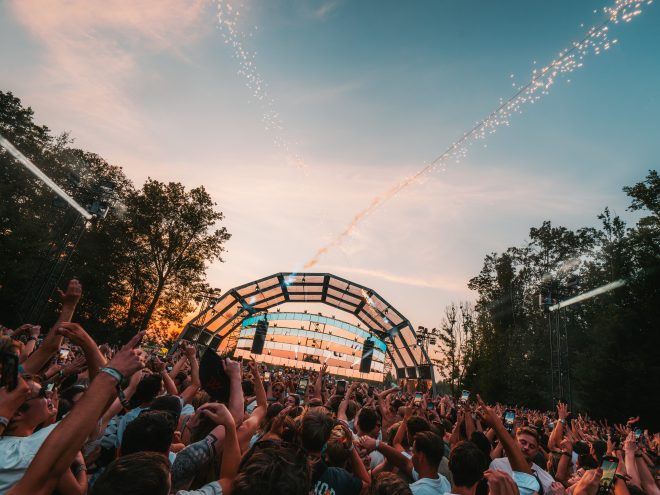
A GROUP EFFORT
Dennis Rochat is known for his work with Elevation Events, where he has played a key role in organizing and programming high-profile events like the Soenda Festival and WAS. Club. He is responsible for curating line-ups, managing artist bookings, and coordinating the overall event experience. His work spans both large-scale festivals and more intimate club events, giving him a broad perspective on what it takes to create successful events at different scales.
His thoughtful and strategic approach to programming emphasizes the importance of clear communication, relationship-building, and understanding the practical aspects of event planning alongside creative vision.
“I think the most important thing that benefits everyone is clear communication (From artists to club and festival owners to the audience). One of the fun things about programming is also the tactical aspect of it, so you have to weigh your words well, and some basic communication skills help a lot. This also counts for communication with advancing, marketing, or other disciplines. It helps that all the parties are in the know when something changes or happens differently."
He is aware of the delicate balance between booking big-name artists to drive ticket sales and maintaining a unique atmosphere that resonates with the audience.
“When you are booking a program, you try to factor in all these things, with the line-up being the most important factor. For example, an event can have the coolest underground line-up, but if it's not selling any tickets, it will not benefit anyone at the end of the day. However, the lineup doesn't have to be the main selling point of the event. Location, production, vibe, or accessibility can also really help with selling the event. For an event to succeed, I think it's important to keep all those things in mind and create a balance that benefits your audience the most while also making sure your event stays healthy."
His ability to juggle the business side of event planning with his passion for music and creativity has made him a respected figure in the industry, and he brings a level of transparency and honesty to his work, which is appreciated by both artists and event teams.
“The basics of programming are not that difficult. You reach out to an agent who is representing an artist (or sometimes an artist themselves if they don't have an agent), and you ask if the artist is available and willing to play at an event you are booking on x date. When they are, you make an offer, negotiate a bit, and confirm the show." He shared.
“However, you are often not the only event that is trying to book 'X' artist. Especially if they're quite popular. At any given moment, multiple events around the world are also trying to book that same artist. That's where the fun part starts. Why should an artist choose you and not the other event? Money is a factor, but that's not the only thing and sometimes not even the most important aspect."
Dennis also brings a level of strategy to his work that I admire. When he talks about the challenges of booking big-name artists, it’s not just about who can offer the most money—there’s a lot of negotiation and relationship-building at play. I love how he talks about the process, especially how he understands the importance of reputation, timing, and even how the overall vibe of the event can influence an artist’s decision. It’s so much more complex than simply picking out names—it’s about crafting an experience and making it stand out in a crowded market. That’s the part of the job that often gets lost, but Dennis has a real grasp on it.
“The rest of the line-up of the event, the reputation of the event, the relationship with the artist/agent/manager, the date of the event, the location of the event, and so on, all play an important part in the final decision-making by the artist. These things all matter when you are booking someone, and as a programmer, it's your responsibility to make sure you keep those in mind."
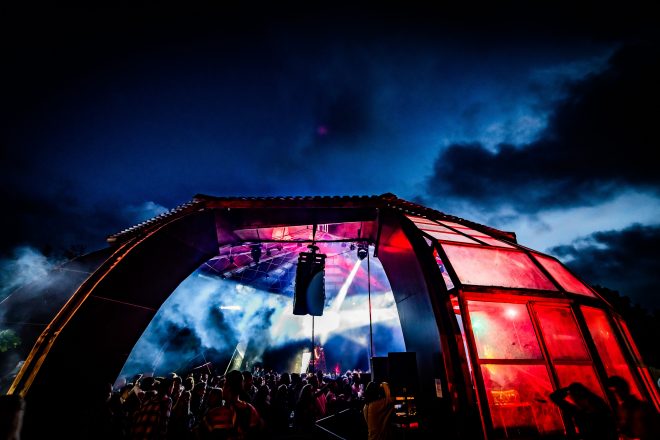
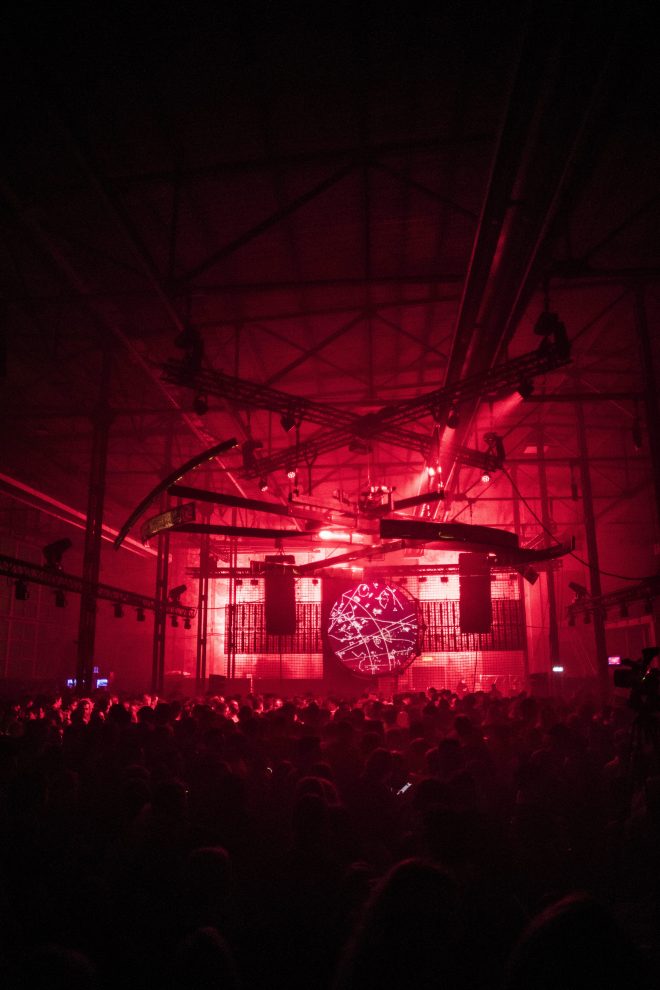
THE MAGIC OF CREATING A LINE-UP
Tom van Ulsen is the creative force behind Paradigm, an influential venue and festival in Groningen. With a sharp focus on authenticity and innovation, he has spent over a decade shaping Paradigm’s unique atmosphere, always striving to create music experiences that resonate deeply with his audience. Alongside his programming partner, Chris Vos, Tom fosters an environment of continuous discussion, drawing inspiration from both the global music scene and local influences. His belief in a musical approach that is
"Better subdued and stretched than bombastic and with climaxes."
Speaks to his commitment to providing events that allow the music to breathe, creating a seamless, immersive experience for attendees. He takes great pride in balancing high production standards with a commitment to artistic exploration, ensuring each event feels both fresh and grounded in the distinct vibe of Paradigm.
What sets Tom apart is his ability to blend quality with innovation while maintaining a strong sense of community. His programming approach is deeply collaborative, not only with his team but also with local and international artists, offering a platform for new and emerging talent while also nurturing long-standing relationships. He is particularly dedicated to supporting local artists in Groningen, creating a space where regional talent can thrive alongside global acts. His attention to detail is evident in how he considers every element of an event, from the flow of energy to the design of the venue and the overall experience.
“We discuss a lot about music, releases, DJ sets, and what we find striking. This could be because something is innovative or brings back a more old sound. But also, of course, with half an eye on what is happening in our region. In contrast to many other cities, Groningen is quite isolated by Dutch standards, and this means that national and international developments sometimes take a different path in the northern part of the Netherlands.”
“In addition, we have a knack for being less likely to make obvious choices. In my opinion, this is largely possible because we, as programmers, have a framework that works well. Namely, a high standard of production and its festival site and warehouse, both with a strong individual character. As a result, in addition to our program, we can also rely heavily on its value and strength, and thus sometimes make more unorthodox choices.”
For Tom, creating an unforgettable event goes beyond the music—it’s about crafting a unique, transformative experience that connects people to the art, the space, and each other.
"Chris and I often come up with, in our view, beautiful plans that tell a true story and in which familiar faces and discoveries complement each other. It is also true that in our history, and also today, there have always been many vinyl DJs. Not that this is a starting point for programming, but the limitations that come with playing records, compared to playing digital. Fits well with our feeling that " we prefer not high climaxes with bombastic short moments, but a more stretched out and subdued approach."
“That said, the form an artist uses to deliver her sound is secondary to us as long as the output is at its best. Another factor in the curation is our sense of responsibility for the space for local artists. We feel connected to this city, know plenty of good DJs, and are happy to add a signature to our entire program, where, if appropriate, there is also a clear focus on northerners."
“Of course, we also have to ensure that we are attractive enough for potential visitors, and we look for a balance between what we think they want, what suits us well, and how those worlds can strengthen each other. We hope that all the above matters contribute to the desired atmosphere that we have in mind for that specific event. And this is, of course, based on our own experiences on the dance floor, in different places, also listening back to recordings if we could not physically be at an artist's performance. Because we have a good history with some acts, we also dare to make some crazier choices, because we know that the artist knows our vibe, creative expressions, sound system, and audience well, and can then make bridges that are not the most predictable."
Tom's approach to balancing musical diversity with cohesive event flow is thoughtful and reflects a deep understanding of both the limitations and opportunities that come with curating events. His focus on maintaining a strong connection between the different areas at Paradigm, even when offering a variety of styles, allows for a natural flow while still catering to diverse tastes.
“I think we may have to take this into account a little less than other parties (diversity of Genres). Even though it attracts many visitors nowadays, our festival is still a boutique festival. If you look at the size per internship (small) versus the number of stages(large), you will see that it is more of a challenge for us to have no overlap between stages on the same slots, instead of having to look for how we can increase diversity in styles (that we want to offer). That said, we do look for content that fits with the stage (even if we have it curated by an external party) that connects somewhere with both the bigger picture and with other stages."
By making clear distinctions between areas at indoor events and intentionally focusing on cohesion within those spaces, Tom ensures that the energy and vibe of each area complement each other. His insight into keeping a focused sound when programming a single area and working closely with artists to align their visions shows a clear commitment to maintaining a sense of unity without sacrificing diversity.
This approach strengthens the overall experience and empowers attendees to explore the event and the different musical territories in a way that feels purposeful rather than fragmented.
“At our indoor events, we often make a strong distinction per area, and in this way, we can offer a diverse range of styles, but within the specific area, there is often a strong focus on the cohesion of the artists who are in the same area. This does not alter the fact that visitors can, of course, change and walk back and forth between different areas. Whenever we do an outdoor or indoor event that explicitly only has one area, we generally choose to go for a specific sound and not to program different styles directly together. If we have one area, and also one corner we are more likely to opt for a lineup in which the composition consists of DJs who are more out of the box, and postmodern ", and then discuss with artists and agents whether this idea behind “broader” rotating acts resonates with their thoughts on this."
In terms of energy and event dynamics, Tom's musical philosophy shines through. His rejection of a strictly linear energy progression for events is key to understanding Paradigm's distinctive atmosphere. Instead of crafting an event that builds toward a single climax, he encourages a more organic energy flow that respects the ebb and flow of the crowd's experience. The event's energy can peak at various points, allowing for moments of reflection and space, which ultimately enhances the longevity of the experience. His comments about festivals versus intimate club nights highlight the complexity of programming for different settings. At festivals, where there are multiple areas and diverse offerings, he embraces variety while seeking out underlying connections to create an immersive experience. In contrast, intimate events require more control over the experience, with a focus on coherence and a well-structured progression.
“In my opinion, a good event of ours does not have an explicit highlight in energy. The last act will not play softer/slower/more subdued than the opening act, but it is certainly not the case that it is a linear line upwards. The vibe must provide space at the beginning of an event to allow people to get grounded and at the end of an event to allow everyone to leave with a satisfied feeling. But the peak of energy can take place in all kinds of moments and ways in between. Our sound systems and our creative choices in both the visual and creative/art fields partly determine the experience of energy."
Ultimately, Tom’s approach is centered on creating spaces where quality and innovation coexist, whether in the vastness of a festival or the intimacy of a club, always with a commitment to the underlying values of Paradigm.
“The biggest difference between a festival and a club evening of (intimate) programming lies in: on the one hand, opting for a broad offering and on the other hand, for a focused offering. Both have their charms, personally, I always enjoy trying to look for underlying similarities between different areas at our festivals.”
“On the other hand, an evening with one warm-up act and then a six-hour second act, for example, can also be a challenge. A big factor is that the more diversity there is in the artist's proposal, the more different experiences are possible between people about the same event. That's why I think it is true that when we do an intimate event, we have a better idea in advance of how we can bring people along. People have less freedom to choose, and therefore more of the same experience."
By emphasizing that the production quality and the talent of the DJs are never in question, he reassures both artists and attendees that there is a solid foundation upon which to build the event experience. However, he also acknowledges that while the internal standards may remain consistent, the experience of the attendees may differ. This openness highlights the unpredictable and dynamic nature of live events, where, despite careful planning, the crowd's perception and interaction with the environment can vary. Tom’s recognition that Paradigm’s unique setting—whether it’s a one-of-a-kind festival site or a distinct warehouse—provides the creative freedom to make bold, innovative choices is an important aspect of how he approaches event programming. This flexibility allows them to push boundaries and take risks in ways that might not be possible in more conventional venues, where logistical constraints and typical expectations may limit creative exploration.
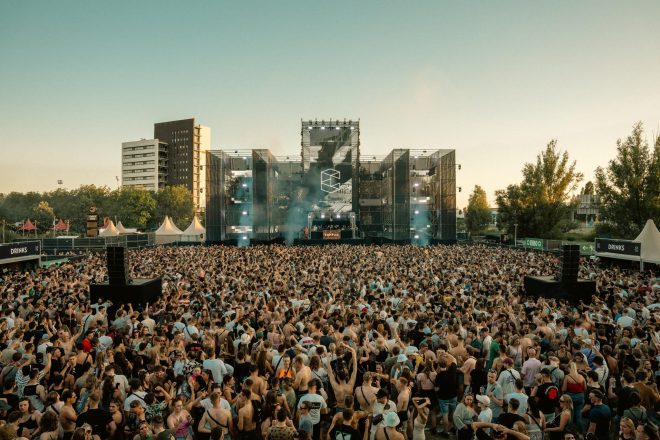
STRUGGLES AND PERSONAL INSIGHTS
Based in Enschede, Netherlands, Bas Amro is the curator behind Onder De Radar Festival. Known for his strong personal vision and deep connection to the artists he books, Bas approaches programming with a focus on curating an authentic and coherent lineup that speaks to both his musical tastes and the broader needs of the local scene. He strives to blend well-established headliners with fresh, emerging talent and often prioritizes artists who are important but not necessarily commercially mainstream, aiming to bring new and vital sounds to the community.
The life of a programmer is full of challenges, from long hours to balancing financial pressures with creative vision. As Bas described it,
"It’s getting harder and harder to stay creative each year... but I start with my ideal lineup. This way, I feel like I’ve built an ideal lineup with headliners that’s sustainable for our region."
Bas's work is characterized by his commitment to the artistic integrity of the festival while maintaining a balance with the logistical and financial realities that come with organizing an event on this scale. He values creating a festival experience that is rooted in his personal preferences and vision, which allows the event to stand out in a scene that often prioritizes industry norms and trends.
This is generally a mixture of four things. Firstly, I like to have a good few artists that I personally really love and build from there. Of course, I only book artists that I like in some way, but here I’m talking about artists that I’m personally a big fan of. I need to have that as a foundation to get a nice energetic start of the process for myself and make sure the project remains close to me, as I of course do my best to keep things coherent - meaning the rest of the line-up has to be able to connect in a way with my personal preference. Secondly, I add artists that I feel need to be heard by our audience. By that I mean artists that are adding something new to our scene, perhaps or perhaps not well-known, but refreshing and in my opinion important to feature. Thirdly, I can’t deny that we need headliners when working on this scale. But with the ideal line-up concept I have built so far, I am forced to stick to headliners that match the first two steps. So those headliners have to match what I believe to be important artists and in some way, connect to artists I love. Lastly, I try to get a sense of which local (east-NL) artists are really promising, and I see where I can add them. This way, I feel like I built an ideal line-up with headliners that’s sustainable for our region, close to what I believe in, and close to the artists I find important to feature.
Despite the pressures and challenges that come with the role, Bas manages to stay grounded and focused on what matters most to him: quality, creativity, and the genuine connections between artists and their audiences.
I’ve always felt like an outcast in the scene, and I feel no pressure to fit into the industry’s expectations. But that’s simply because Dutch platforms in our industry never write about Enschede, keeping the path clear for me and just not worrying about the industry’s expectations. I always think growing up in Enschede keeps you phlegmatic, so I feel like I don’t easily fall for hypes. People always say I sound like a cynic, and that’s probably true, haha. But I do believe it helps me stay on course.
His programming style reflects a deep understanding of the local scene, and he is dedicated to providing a platform for the next generation of artists in the east of the Netherlands.
It’s great to see Bas Amro's candidness about the challenges of balancing work and personal life in such a high-pressure field. His approach to staying grounded by creating a manageable to-do list and carving out time for self-care, like walks and switching off his phone, is something many in the industry can relate to. It shows that even though the demands can be overwhelming, prioritizing small, intentional habits can help maintain mental health and balance.
His reflection on the early failure of his first event is particularly poignant. Starting at just 19, with such high expectations and then a significant outcome that didn’t meet my hopes, is a reminder of how tough and humbling this industry can be.
“That must be the first event I did on my own. I was 19 years old, and we had a UK techno artist flying in for quite a fee. I think we sold about 15 tickets or so. It was so embarrassing. I can laugh about it now, but that one hurt. I learned a lot from that night."
However, the fact that Bas can laugh about it now, after learning so much from that night, shows a healthy perspective. It's a great example of how setbacks can ultimately fuel growth and drive.
He works hard to anticipate potential challenges before they arise, which is a valuable trait in the unpredictable world of event planning.
Bas comes across as someone who has a deep sense of humility and resilience, which I appreciate. His honesty about the struggles of programming and maintaining a balance between his personal and professional life is refreshing. It’s easy to admire how he stays true to his vision and principles despite the pressures of the industry. His ability to reflect on early failures, like that first event at 19, shows a rare self-awareness and a willingness to learn from the experience, which isn’t always easy to do.
On a personal level, I sense that Bas doesn’t just view his work as a career but as a form of expression and connection to the community. He seems to value the authenticity of his journey, even though it’s not always smooth. I admire that he embraces his outlier status and doesn’t feel the need to conform to what the industry expects—it's clear that he’s not driven by ego but rather by a genuine passion for what he does.
His approach to mental health, especially the way he manages to stay grounded by stepping away from the constant digital noise, shows that he’s not just concerned with his professional growth but also with his well-being. That balance is so important, especially in a field like his.
FINAL THOUGHTS
Being a programmer, especially in a scene like music and events, feels like a constant push and pull between your heart and your head. On one hand, it’s about curating an experience that speaks to you on a deep level—about finding artists you love, setting the tone, and creating moments that are personal, powerful, and unforgettable. But then, there's this whole other side to it—the reality of budgets, timelines, availability, and the external pressures of trying to make everything work. It’s not just about picking the lineup or the venue, it’s about making sure every piece fits together to create something meaningful for everyone involved. And that can feel incredibly overwhelming.
It’s tough because there’s a lot of sacrifice involved. As much as you're creating something for the community, you're also losing pieces of yourself along the way. That balance between work and personal life, for example, it’s nearly impossible to switch off when your brain is constantly spinning with ideas or worrying about logistics. You might feel like you're in a constant hustle, trying to keep things fresh and exciting, but it's hard to find time for yourself amidst the madness. You want to have fun, enjoy the process, and feel inspired, but there are always moments of doubt or exhaustion. And it’s not always clear how to manage it. Sometimes, you just have to power through it, but that means things like sleep, self-care, and downtime often fall by the wayside.
It also feels like there’s this duality when you’re a programmer—you have to be both in tune with the industry and yet slightly apart from it. On the one hand, you have to be aware of trends, what people are into, and what’s hot right now, but on the other, you have to stay true to your taste and vision. Sometimes, it feels like you’re an outsider, pushing your agenda in a sea of expectations. But that’s what makes it exciting, right? There’s a special freedom that comes from staying true to your instincts, even when it feels like you're going against the grain. At least for people like Bas and others in the same role, that’s what keeps the work authentic and meaningful.
I think it’s safe to say that what keeps programmers grounded is not just the music or the shows they curate but the relationships they build with people along the way. It’s the connections with artists, the team, and the audience that turn the work into something more than just a job. There’s this sense of community, of creating a space for everyone to gather and experience something special together. Despite the challenges, there's also something undeniably fulfilling about seeing your hard work come to life and knowing that you played a key role in crafting that experience.
In the end, it’s not just about the events or the lineup or the logistics—it’s about creating a sense of belonging and connection. And that requires a whole lot of personal investment. But it’s that personal commitment, even through the long hours and the tough decisions, that makes the role of a programmer so rewarding. It's about feeling like you're part of something bigger, even when the weight of the job feels heavy.


